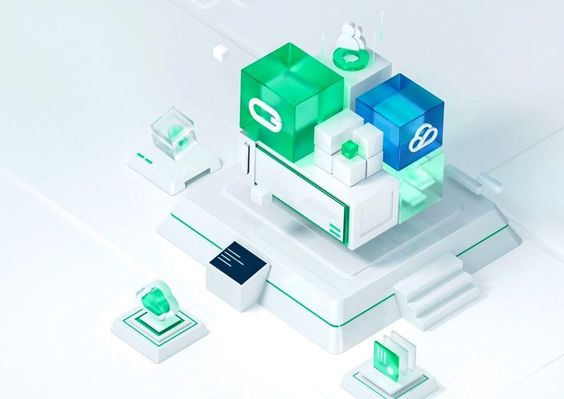When we transfer money online, log in to our email, or browse websites, how can we be sure we're accessing the real destination and not a fake impersonation? This relies on a key technology: DNSSEC. DNSSEC provides digital signature authentication for DNS query responses, effectively adding an unforgeable "digital fingerprint" to each domain name resolution record, ensuring the user's received IP address is authentic.
How DNSSEC Works and Technical Implementation
DNSSEC uses public key cryptography to establish a complete chain of trust for DNS data. Its core mechanism adds four key resource record types to the existing DNS protocol: DNSKEY stores public keys, RRSIG digitally signs resource record sets, DS is a key hash linking a subdomain to its parent domain, and NSEC/NSEC3 is used to verify negative responses.
When a user initiates a DNS query, DNSSEC requires the recursive server to return not only the requested IP address, but also the corresponding digital signature and public key. The recursive server verifies the validity of the signature from top to bottom, working through the domain hierarchy: starting from the root zone, to the top-level domain, and finally to the second-level domain, confirming that the signature at each level matches the corresponding public key. This design ensures that any tampering at any intermediate level is immediately detected.
Contrary to common misconception, DNSSEC does not encrypt DNS query content. Instead, it focuses on data origin authentication and integrity verification. By establishing a cryptographic chain of trust, it assures the recipient that the DNS response truly comes from the legitimate administrator of the domain name and has not been tampered with during transmission. This mechanism is similar to verifying digital signatures when downloading software or verifying passport authenticity at immigration—it doesn't focus on content privacy, but rather on confirming identity authenticity and data integrity.

The Urgency and Practical Significance of DNSSEC Deployment
The vulnerability of internet infrastructure has been exposed in recent years. In 2025, a DNS hijacking incident at a major financial institution resulted in hundreds of customers being redirected to phishing websites, causing significant financial losses. Subsequent investigations revealed that the attacker exploited the lack of verification mechanisms in traditional DNS to tamper with the resolution results at the recursive server level.
This incident is not an isolated one. Globally, DNS-related attacks have become one of the fastest-growing cybersecurity threats. Recently, a resolution failure at a well-known Chinese cloud service provider rendered numerous corporate websites dependent on its services inaccessible for several hours, resulting in direct economic losses in the tens of millions of yuan. These incidents collectively reveal a harsh reality: a DNS service without DNSSEC protection is like a door without a lock, vulnerable to malicious intrusion at any moment.
For businesses and organizations, deploying DNSSEC has gone from being a "nice to have" to a "must have." It not only effectively prevents man-in-the-middle attacks like DNS spoofing and cache poisoning, but also serves as the foundation for building trusted online identities. In particular, in sectors like e-commerce, online finance, and government services, where authenticity is paramount, the origin verification capabilities provided by DNSSEC are crucial for building user trust.
Technical Challenges and Deployment Considerations
Despite its significant advantages, DNSSEC's global deployment rate remains to be expanded, driven by multiple technical and management challenges. Key management is a primary challenge: DNSSEC utilizes a hierarchical key structure, requiring the root zone, top-level domain, and each level of domain to maintain its own key pairs. Secure storage and regular rotation of private keys require sophisticated operational procedures. Once a private key is compromised, the entire domain's chain of trust is at risk of collapse.
Performance impact is another consideration. Digital signature verification increases the computational load on recursive servers, potentially slightly increasing resolution response times. Furthermore, DNSSEC response messages are larger than traditional DNS, potentially increasing network congestion. However, with improved hardware performance and optimized algorithms, these impacts have become acceptable.
Deployment complexity has also hindered DNSSEC's widespread adoption. Domain administrators need to generate key pairs, configure signing policies, submit DNS records to the parent domain, and establish ongoing monitoring mechanisms. This process involves multiple steps, and any oversight can lead to domain resolution failures. Fortunately, major domain registrars and DNS service providers now offer simplified deployment solutions, significantly lowering the technical barriers to entry.
Global Deployment Status and Trends
Globally, DNSSEC deployment is accelerating. All generic top-level domains (gTLDs) have deployed DNSSEC, and over 90% of country-code top-level domains have also done so. In Europe and North America in particular, government websites and financial institutions have significantly higher DNSSEC adoption rates than other sectors, reflecting the public sector's strong commitment to cybersecurity.
The enterprise sector is experiencing a divergence. Large technology companies generally enable DNSSEC for core business domains, while deployment rates among small and medium-sized enterprises remain relatively low. This disparity stems from both resource investment considerations and uneven security awareness. Fortunately, as cloud service providers roll out DNSSEC as a standard feature, the barrier to deployment for small and medium-sized enterprises (SMEs) is steadily decreasing.
Future DNSSEC development will demonstrate three key trends. First, it will be deployed in conjunction with encrypted DNS protocols like DoH/DoT to build a comprehensive DNS security system. Second, increasingly sophisticated automation tools will enable complex operations like key rotation to be completed with a single click. Third, DNSSEC will be deeply integrated with zero-trust architectures, becoming a fundamental component of network authentication.
In short, DNSSEC provides deterministic guarantees for the most basic address resolution services—ensuring that every query reaches its intended destination. For businesses and organizations pursuing digital transformation, deploying DNSSEC is not just a technical decision but a forward-looking investment in future network security.

 DNS Intelligent Resolution
DNS Intelligent Resolution

 Custom Authoritative DNS
Custom Authoritative DNS
 Cloud Computing Services
Cloud Computing Services
 Server Rental
Server Rental
 DDoS protection
DDoS protection
 About DNS.COM
About DNS.COM
 Support
Support
 Contact Us
Contact Us
 AFF
AFF
 API Docs
API Docs

 CN
CN
 EN
EN













